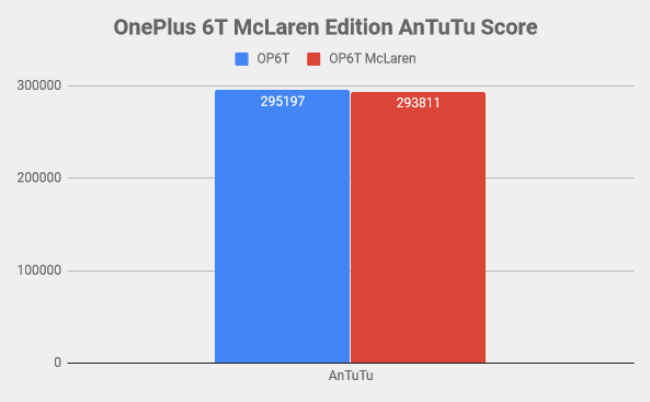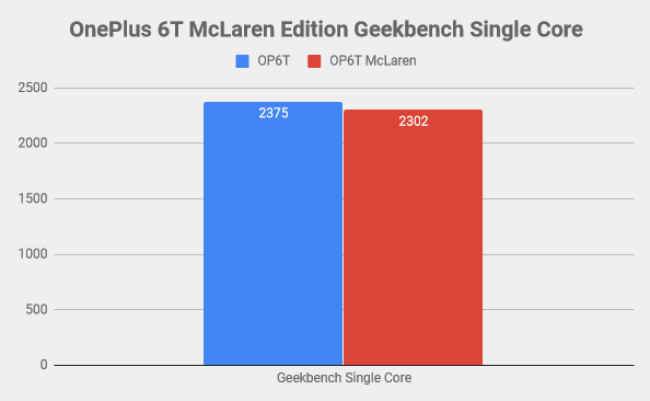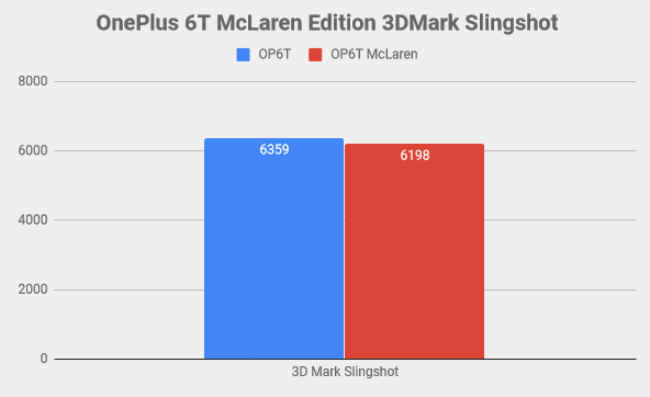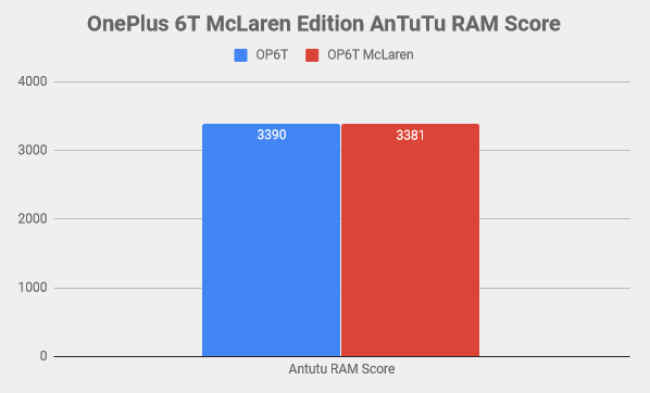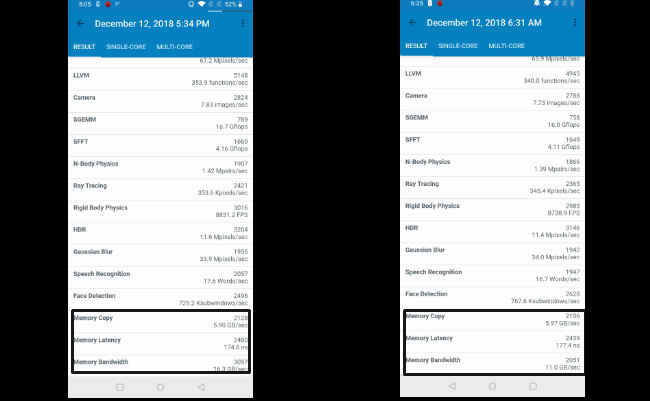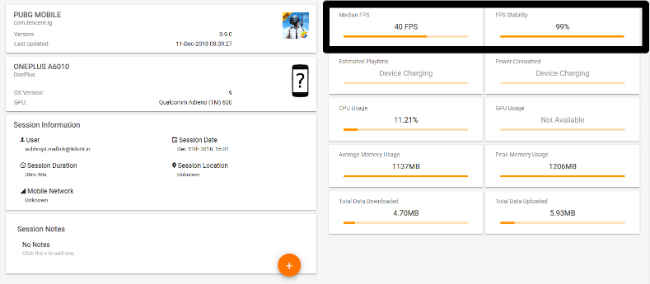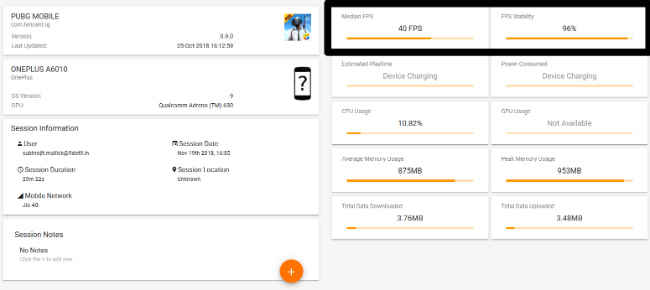OnePlus 6T McLaren Edition: Is 10GB RAM overkill?
We took the OnePlus 6T McLaren out for a drive on the most intensive race tracks testing out whether 10GB of RAM really has an impact on the performance.
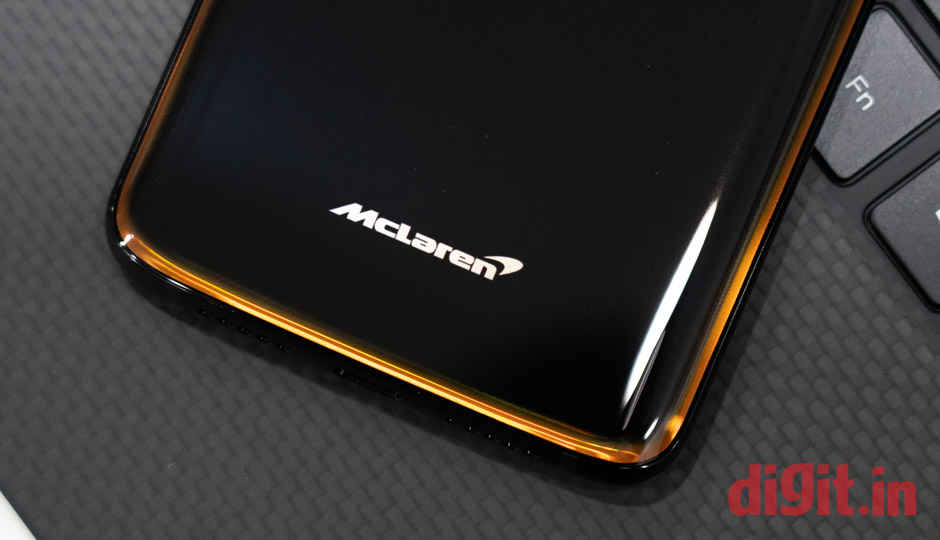
Celebrating its 5th anniversary, OnePlus recently announced a collaboration with Formula 1 giant, McLaren, launching the OnePlus 6T McLaren edition priced Rs 50,999. “Salute to speed” is the justification for it, and for the most part, the two complement each other perfectly. Both brands are icons of speed — One on the race tracks and the other, in the hands of people. While many thought the collaboration would simply mean another sexy colour variant, OnePlus took us by surprise, packing the most amount of RAM in the phone ever. 10GB worth of memory is the highlight of the device, apart from the 30W fast charging which OnePlus rechristened as Warp Charge.
 Survey
SurveyThe OnePlus 6T (the normal, 8GB variant with 128GB storage) topped almost all our benchmark and performance tests and was recently adjudged the Digit Zero1 Award 2018 for the best high-end smartphone. It even outperformed out-and-out flagships like the Google Pixel 3 XL, the Samsung Galaxy S9+ and the likes. So when the OnePlus 6T McLaren Edition arrived in our test lab, we were all raving to take it out for a spin. Setting it up and playing around with it for a while, it oddly felt familiar with no difference in user experience whatsoever, even with two gigs of extra RAM. We pondered over why one of the fastest phone was packed with even more horsepower, and to find out, we designed and ran a few tests to get an idea whether 10GB of RAM actually make any difference.
A word about the tests
The tests we used to measure the performance of the OnePlus 6T McLaren Edition are a combination of synthetic and extreme real-world scenarios. There’s nothing out there in the smartphone space that can really leverage so much RAM. Even Android 9 Pie’s resource management doesn’t have the provision for so much RAM and as a result, even if you keep 50 apps open (hypothetically), it won’t make any difference as Android will start killing the apps after say, the tenth app you launch.
With that in mind, here’s how the OnePlus 6T McLaren edition performed in our tests:
Test 1: Synthetic Benchmarks
The OnePlus 6T McLaren Edition was made to pass through the usual rounds of benchmark tests. The results were a little surprising and we spent some time figuring out why. Turns out the 8GB+128GB OnePlus 6T Thunder Purple edition performed better than the 10GB OnePlus 6T McLaren edition on all the three popular mobile benchmarks — AnTuTu 7.0, 3DMark Slingshot and Geekbench Single Core and Multi Core tests.
While the difference weren’t all that big, it dampened our expectations from the McLaren branded phone. On AnTuTu 7.0, the McLaren edition scored 293811 while the Thunder Purple OnePlus 6T scored 295197, a difference of around 1386 points.
On Geekbench Single Core, the OnePlus 6T McLaren Edition scored 2302 against the regular OnePlus 6T’s 2375, a difference of 73 points. Even on multi-core tests, the McLaren edition charted 8691 as compared to the Thunder Purple OnePlus 6T’s 8856, ahead by 165 points.
Even on 3DMark Slingshot, the OnePlus 6T McLaren gave a score of 6198 against the 8GB OnePlus 6T’s 6359, a difference of 161 points.
The difference, even though negligible, was quite baffling. Everything in the OnePlus 6T McLaren edition is the same as the regular variant, save for the RAM under the hood. At least, that’s what OnePlus advertised. It was also easy to figure out that even the benchmark apps couldn’t put so much RAM into use. However, investigating deeper into the scores, we figured the RAM module on the McLaren edition, despite having a larger memory, is slower than that on the OnePlus 6T Thunder Purple.
On AnTuTu, the RAM score of the OnePlus 6T McLaren came up to 3381 while the 8GB OnePlus 6T scored 3390, a difference of just 9 points. That’s just an arbitrary number you can say, but that difference in score was corroborated by Geekbench’s findings.
Left: OnePlus 6T McLaren Edition Right: OnePlus 6T Thunder Purple
In the single-core tests, the OnePlus 6T McLaren Edition had a memory latency higher than the 8GB OnePlus 6T. Anyone remotely familiar with how computers work will know a higher latency is never a good thing. Furthermore, the memory bandwidth on the OnePlus 6T McLaren edition is lower than the 8GB variant. All this, despite having a larger amount of available memory. The difference was the same in the multi-core tests as well, and we presume, that’s the reason behind slightly lower scores on synthetic benchmarks.
Let’s simplify the concept of RAM for you guys. To begin with, the software available for the device needs to be able to exploit it, which in the case of Android smartphones isn’t available. However, let us understand why the higher capacity and slower speed of the RAM isn’t a good thing. Think of RAM as the size of a room and the speed of the RAM as the number of doors in that room. RAM as the name suggests is Random Access Memory which means data comes in and out of RAM as and when you use the phone. Keeping our room and door analogy in mind, a large room with more doors (the 8GB RAM variant of the phone) will always be more efficient than a larger room with fewer doors. Remember, data needs to go in and out of this room as fast as possible and even though the size of the room is important (8GB or 10GB RAM), so is the speed at which it can enter and exit the room.
Winner: 8GB OnePlus 6T Thunder Purple
Test 2: Batch edit JPEG files
Synthetic benchmarks, as the name suggests, are artificially induced scenarios that run the same instruction set on every device to offer a standardized measurement. While it helps in comparing two similar devices, real-world usage isn’t always taken into account. That’s why we devised a performance test of batch editing JPEG files. It’s a good measurement of RAM performance as more available memory is always good for such tasks.
We divided the test into four parts — One batch with 40 images, another with 80, then with 120 images and finally, with 150 images. For every batch, we applied a preset Cross-Process filter to the images and batch processed them, and recorded the time it took for both the OnePlus 6T McLaren Edition and the 8GB variant to complete each set.
Here are the results:
In this case, it’s clear that the 10GB RAM on the OnePlus 6T McLaren has some impact on the processing. The higher memory allows the phone to store more data in real-time for the processor, and as a result, the OnePlus 6T McLaren Edition completed each test round, around 3 seconds faster than the 8GB variant.
Winner: OnePlus 6T McLaren Edition
Test 3: PubG Mobile gameplay
OnePlus 6T McLaren Edition Gamebench Results
OnePlus 6T Thunder Purple Gamebench Results
Gaming is a good indicator as to whether the extra RAM has any difference in gameplay, and for the most part there was no discernible difference while playing PubG Mobile on the OnePlus 6T McLaren Edition and the 8GB variant. We logged the gameplay on GameBench, and figured out the FPS was clocked at 40 FPS with 99 percent stability. On the 8GB variant too, the FPS was capped at 40 FPS but the stability was lower at 96 percent. Furthermore, both the peak memory usage and the average memory usage on the McLaren edition was higher and so was the CPU usage. This indicates that the phone is being more liberal with memory allocation as compared to the 8GB variant, which could be the reason behind more stable gameplay on the OnePlus 6T McLaren edition. Does the data really convert into a better gaming experience in real-time? Not really. Chances are, you won’t notice any difference whatsoever.
Winner: OnePlus 6T McLaren Edition
Test 4: RAW file batch processing
Our final test really stressed out the phone, so much so that one of them couldn’t complete the task and crashed after finishing around 80 percent of the test. In this test, we used Photo Mate R3 to batch process RAW images files. We used 16 48MP .NEF files taken from a Nikon-Z7 and tried stitching them into a panorama, keeping the original file size intact.
As mentioned above, the 8GB OnePlus 6T crashed, 80 percent into the test. The RAM usage at that time was 95 percent, with just around 500mb RAM free. It was no surprise that the app crashed.
Meanwhile, on the OnePlus 6T McLaren Edition, the 10GB RAM really came into play and even though it took 95 percent RAM as well, it was able to finish the test, successfully stitching a panorama out of 16 RAW image files at full size. At its peak, only around 672mb RAM was left free.
Coming back to our room analogy, this test shows us how the size of the room is important as well.
Winner: OnePlus 6T McLaren Edition
Final Thoughts
It’s worth noting that these intensive tests only goes on to stress out the phones. No real-world application will do that to a 10GB RAM phone, or even a phone with 8GB RAM for that matter. We doubt anybody would go on to batch process RAW files on a smartphone, but in case you ever need to do it, safe to say the OnePlus 6T McLaren edition won’t let you down. In regular usage like browsing the web, shooting photos and videos, or playing games, the phone will hardly ever be stressed out and that could make it last longer than your average smartphone since it never is intensively used. The same will be applicable for the 8GB variant as well.
Having said that, it was surprising to see OnePlus use a slower RAM (despite higher capacity) on a phone that’s priced Rs 50,999 while the Rs 37,999 priced 8GB+128GB Thunder Purple OnePlus 6T has a faster RAM module with higher memory bandwidth and lower latency. Either 10GB LPDDR4X RAM is not available in the same higher bandwidth, or OnePlus is saving costs to keep the price in check.
While it could be argued that 10GB of RAM can keep the OnePlus 6T McLaren Edition future-proof for longer, higher RAM might not mean better usability in the future. Processors are expected to get better over time, and this phone with a Snapdragon 845 under the hood, three years down the line, might not be able to keep up with newer Snapdragon chipsets, despite 10GB of RAM. The only place where that much RAM can really make a difference is in AR or VR, but then OnePlus doesn't seem to have any plan of getting into that field.
